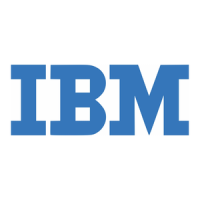
Do you have a question about the IBM DB2 and is the answer not in the manual?
| Developer | IBM |
|---|---|
| Initial Release | 1983 |
| License | Proprietary |
| Written in | C, C++ |
| Category | Database Management System (RDBMS) |
| Operating System | Linux, Windows |
| Programming Languages | C, C++ |
| Data Models | Relational |
| Editions | Community, Standard, Advanced |
| Key Features | high availability, scalability |
Explains how JDBC applications establish a connection to a data source.
Details on connecting to a data source using the DriverManager interface.
Details on connecting to a data source using the DataSource interface for portability.
Guidance on selecting the appropriate IBM Data Server Driver connectivity type.
Explains the JDBC interfaces used for executing SQL statements.
Explains how to retrieve data from tables using ResultSet objects.
Explains how to connect to a data source in an SQLJ program.
Details SQLJ connection using the JDBC DriverManager interface.
Details SQLJ connection using the JDBC DriverManager interface.
Details SQLJ connection using the JDBC DataSource interface.
Details SQLJ connection using the JDBC DataSource interface.
Describes executing SQL statements within SQLJ.
Details performing positioned UPDATE and DELETE operations in SQLJ.
Explains how to retrieve result sets using SQLJ iterators.
Describes how to control SQL statement execution in SQLJ.
Details handling SQL errors and warnings in SQLJ.
Explains how to handle SQL errors in SQLJ applications.
Details on setting up the WLM and Java environments for Java routines.
Describes setting up WLM application environments for Java routines.
Provides an example of a WLM address space startup procedure for Java routines.
Explains the run-time environment setup for Java routines.
Explains how to define a Java routine to DB2.
Explains how to write Java stored procedures that return multiple result sets.
Details the preparation process for JDBC programs.
Outlines the preparation process for SQLJ programs.
Explains how to bind SQLJ applications to multiple DB2 servers.
Steps to prepare Java routines from JAR files.
Recommended method for preparing SQLJ routines from JAR files.
Explains how to run JDBC and SQLJ programs.
Summarizes mappings of Java data types to database data types.
Defines how connection properties define the connection to a data source.
Lists properties common to all supported database products.
Lists properties specific to DB2 servers.
Specifies a value that controls the class of query optimization.
Lists properties specific to DB2 for z/OS and IDS database servers.
Lists properties specific to DB2 Database for Linux, UNIX, and Windows servers.
Details on installing the driver as part of DB2 installation.
Describes jobs for loading the driver libraries.
Lists required environment variables for the driver.
Explains how to customize driver configuration properties.
Explains the DB2Binder utility for binding DB2 packages.
Provides steps for migrating to the IBM Data Server Driver.
Explains how to verify the driver installation.
Details user ID and password security for JDBC connections.
Explains user ID-only security for JDBC connections.
Covers encrypted security for passwords and user IDs.
Details Kerberos security support for JDBC and SQLJ.
Details how to configure connections for SSL usage.
Explains how to configure the Java Runtime Environment for SSL.
Provides an example of enabling connection concentrator for DB2 for z/OS.
Explains procedures for starting JDBC trace collection.
Outlines basic steps for collecting system monitoring data.